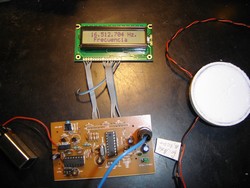
The Beacon Interval is how often your beacon transmits its advertising packet.

INTERVALO BEACON HOW TO
This also shouldn't have any impact on which band a device selects, since beacons are sent independently on both bands.Wondering which factors you need to take into account when planning your beaconĭeployment and how to properly set up your beacons? But, in a home environment, even with a few secondary mesh points, the standard beacon interval shouldn't be a problem. In some very high density environments (e.g., enterprise / office), it can make sense to use a longer beacon interval just because there are so many access points all beaconing at the same time. So, I would investigate this angle to see if you can figure out what may be happening.Īs for beacon interval, that is a network-side configuration, not something client devices can change. If you're within three feet, it could be a problem. Oddly, it's also possible to be too close to the access point. I've even seen cases where someone had a wireless internet service provider that was interfering in that part of the band. Things like wireless gaming headsets and wireless subwoofers / surround sound speakers can all cause these issues, since they often use the same part of the 5GHz spectrum, but not using a WiFi-compatible channel structure. That could be because it isn't doing a great job of making that decision, but it could also be because there is a source of 5GHz interference nearby that is making 5GHz a poor choice. So, if your laptop is connecting to 2.4GHz, it is because it has decided that is the best option. Worse yet, many clients ignore the extra information Nest WiFi provides (since the 802.11k and 802.11v specifications are optional). First, while Nest WiFi does provide clients with some extra information they can use to make better decisions about which band to connect to, which access point to connect to, and when to switch, clients are still in charge of those decisions. Wonder if anyone has tried using higher beacon intervals to force a laptop to use 5Ghz over 2.4Ghz? Or I have misunderstood the effects of changing Beacon Interval on the device? as that supposedly should favour 5Ghz where reception is strong.
INTERVALO BEACON WINDOWS
So basically I am at the mercy of the wifi card and Nest to randomly decide whether to use 2.4Ghz or 5Ghz.Īfter reading about beacon interval, have changed the beacon interval for the adaptor in Windows from 100 to 300.
INTERVALO BEACON DRIVER
Also the Windows driver for this wifi card does not allow me to prevent it from connecting to 2.4Ghz, although I have selected it to "prefer 5Ghz". but later I might notice it back on 2.4Ghz. Sometimes I see it connected to 5Ghz at 149. So since switching to Nest, where I can't select channel for 5Ghz, it seems to use channel 149 for 5Ghz and sure enough I find this one laptop often choosing 2.4Ghz even though I am sitting next to one of the Nest wifi points. But with Nest I have lost that capability to pre-select the channel (and the same SSID used for both bands). When I reduced the 5Ghz channel on the router the laptop was much more likely to connect to 5Ghz. With my old router setup (pre-nest) I could that one of my laptops with Realtek RTL8822CE wifi card would often choose to connect to 2.4Ghz SSID rather than connect to 5Ghz SSID if the 5Ghz setting was any channel above 48.
I recognise Google Nest does not support users choosing which channels are offered by Nest across both 2.4 and 5 Ghz and that it offers both bands with exact same SSID.


 0 kommentar(er)
0 kommentar(er)
